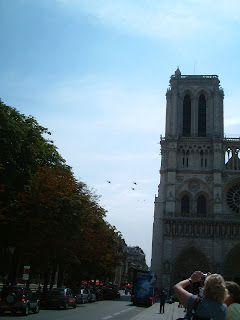The French Air Force, officially the Armée de l'Air (Army of the Air), is the air force branch of the French Armed Forces. Formed in 1909, it is the oldest air force in the world.
General description
As the chief of the Armed Forces, the President of France makes defense policy. The Prime Minister is responsible for national defense. The Minister for Defense is responsible for the execution of military policy. He is advised by the Head of Staff of Armies (CEMA) with regard to the use of forces and the control of military operations. The Head Of Staff of the Air Force (CEMAA) determines doctrine for the Air Force and advises the CEMA on how to use French aerial forces. He is also responsible for the preparation and support of the Air Force. The CEMAA is assisted by the staff of the Air Force (EMAA), directed by the general major general (GMG), and by the services of the police headquarters, responsible for military staff management of the Air Force (DPMAA), service of the police station of the air, service of the material of the Air Force, service of the infrastructure of the air, and the integrated structure of maintenance in operational condition of the aeronautical materials of Defense (SIMMAD). Finally, the CEMAA is assisted by two inspections: the inspection of the Air Force (IAA) and the inspection of the health services of the Air Force (ISSAA).
First level: the central level of command
The French Air Force is founded on the principle of separation of responsibilities between two main types of commands: operational commands (responsible for force projection) and organic commands (in charge of conditioning and logistical support).
Second level: Main commands
The air base is the essential combat tool of the Air Force, whose operational activity never ceases.
The commander of an air base has authority over all units stationed on the base, approximately 600 to 3,500 people. He supervises their conditioning and the execution of orders. Flying activity in France is carried out by a network of bases, platforms and radars of air defense. It is supported by a dozen bases, which are supervised and maintained by staff, centers of operations, warehouses, workshops, and schools.
The bases are organized for flexibility and rapid response. Both in France and abroad, bases have similar infrastructure to provide standardized support. Naval units are spread to give themselves certainty that, on all air bases, they will find the necessary means to execute their missions. This operational mode allows for fast and easy creation of air bases outside of France.
Overseas, a collection of fighters, transport aircraft, and helicopters allow for quick responses to any request for assistance that falls within international agreements. It also ensures the defense of French interests. On average, a base platform, made up of about 2,200 men and women (or nearly 5,500 people including family members), provides an economic boost of about 60 million euros per annum. Consequently, determining the sites for air bases constitutes a major part of regional planning.
History
The French Air Force operates a wide-ranging fleet of aircraft, everything from fighters to transport aircraft and passenger transports to helicopters. It currently maintains some 560 aircraft. 150 comprise the air mobility force (CFAP) and include aircraft such as the C-160 and the C-130 Hercules. The CFAP also includes 80 helicopters like the Super Puma and the Ecureuil. 330 fighter aircraft are incorporated into 19 squadrons charged with different missions. Finally, the French Air Force has a fleet of aircraft, including Alpha Jet, Xingu, Epsilon, and Tucano, to meet training requirements. These air assets are supported by ground units and a sophisticated infrastructure.
The "Future French Forces 2015" concept allows for 300 front-line fighters, mainly composed of the new generation fighter, the Rafale.
 Aircraft inventory
Aircraft inventory Lefthit
Lefthit
No comments:
Post a Comment